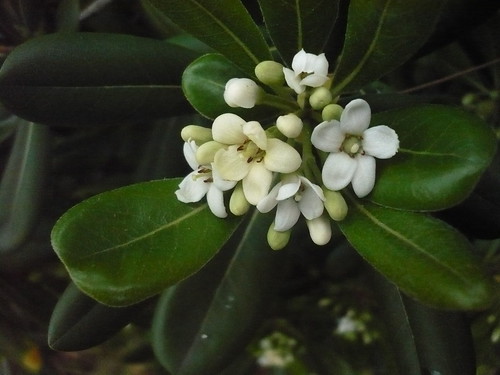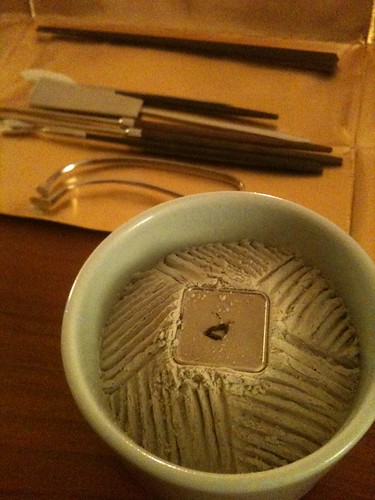Pittosporum & Rain
After our brief Portland encounter, we arrived in Berkeley in the late afternoon of Tuesday, March 19th.
The moment we got out of the rabbit hole and got out, three distinct realizations hit me:
First of all, it was raining, in California - which is a most profound cognitive dissonance for a Vancouverite (and what we supposedly hate the most when on vacation). I didn't only not mind this rain (which was soft, and slightly warm, at least in comparison to its relatives up north). I liked the smell of the rain, which we rarely actually get in Vancouver (where it rains about 90% of the year). Besides, I wasn't exactly on vacation. I had lots of work to do - and the lack of sun would make me feel less like I was missing out on fun.
Secondly, the street dwellers of Berkeley turned out to be the most colorful bunch, and far outweigh their brethren in Vancouver in most categories (except, perhaps, politeness). To prove my point: they were wearing war paints all over their face when we arrived, made probably from flower pollen and exotic spices.
Thirdly and lastly - the air smelled fantastic, and it wasn't just the rain hitting the dry pavement; and it wasn't laundromat either. I spent the remainder of my time trying to find out where the smell came from. And it turned out that the majority of Shattuck Avenue is lined with tall evergreen trees, whose blossoms release the most intoxicating aroma reminiscent of osmanthus, orange blossom and orchid.
A few days later, I learned from Bruno that those trees are non other than Pittosporum undulatum. I'm not sure which kind exactly, but they certainly grow tall, beautiful and fragrant - something you might want to consider when planning your garden!
The moment we got out of the rabbit hole and got out, three distinct realizations hit me:
First of all, it was raining, in California - which is a most profound cognitive dissonance for a Vancouverite (and what we supposedly hate the most when on vacation). I didn't only not mind this rain (which was soft, and slightly warm, at least in comparison to its relatives up north). I liked the smell of the rain, which we rarely actually get in Vancouver (where it rains about 90% of the year). Besides, I wasn't exactly on vacation. I had lots of work to do - and the lack of sun would make me feel less like I was missing out on fun.
Secondly, the street dwellers of Berkeley turned out to be the most colorful bunch, and far outweigh their brethren in Vancouver in most categories (except, perhaps, politeness). To prove my point: they were wearing war paints all over their face when we arrived, made probably from flower pollen and exotic spices.
Thirdly and lastly - the air smelled fantastic, and it wasn't just the rain hitting the dry pavement; and it wasn't laundromat either. I spent the remainder of my time trying to find out where the smell came from. And it turned out that the majority of Shattuck Avenue is lined with tall evergreen trees, whose blossoms release the most intoxicating aroma reminiscent of osmanthus, orange blossom and orchid.
A few days later, I learned from Bruno that those trees are non other than Pittosporum undulatum. I'm not sure which kind exactly, but they certainly grow tall, beautiful and fragrant - something you might want to consider when planning your garden!









